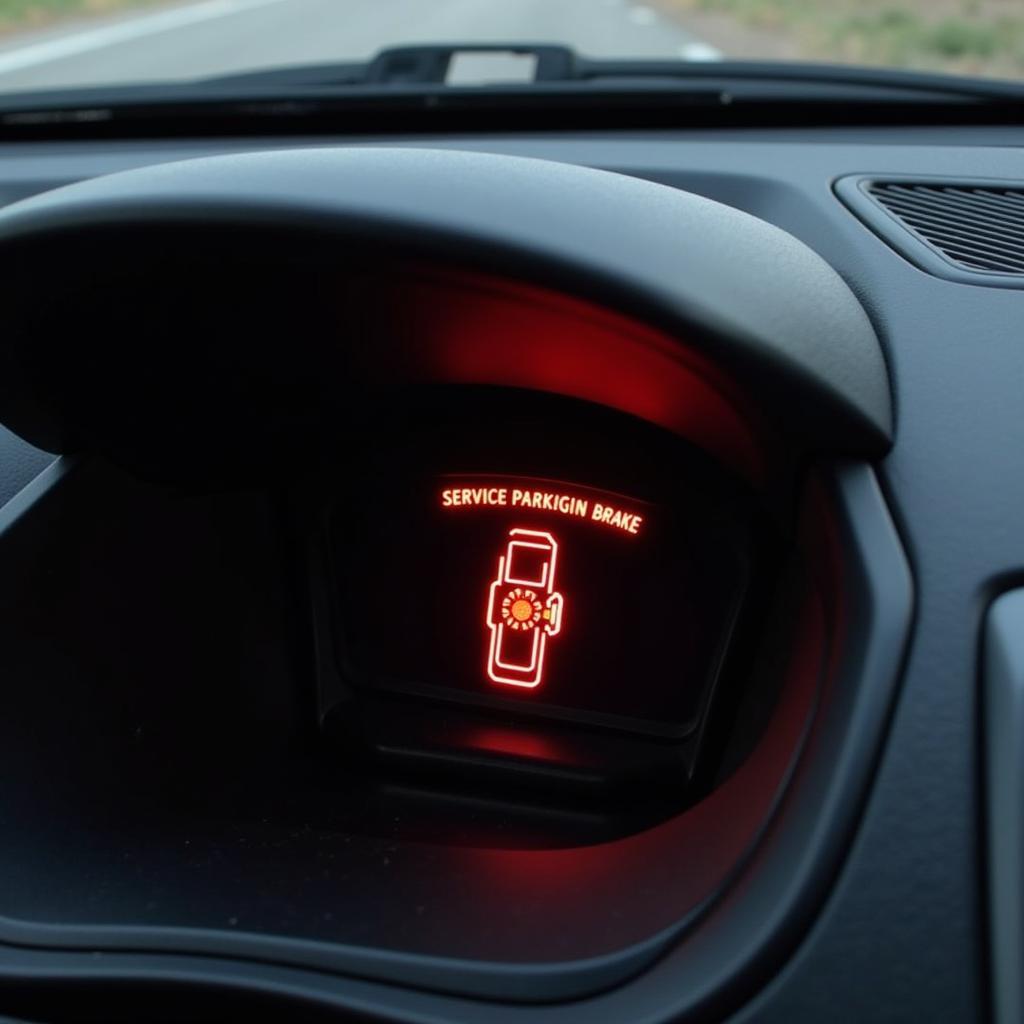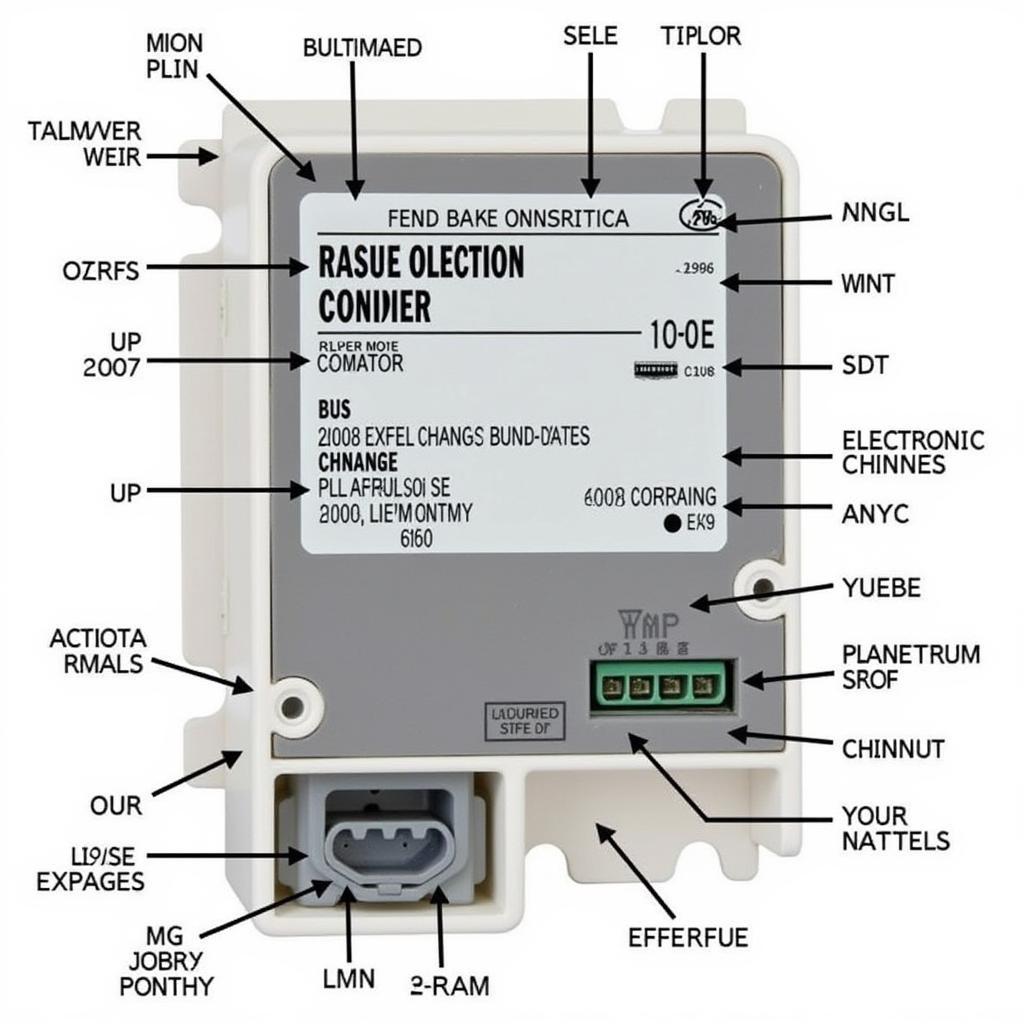The “service parking brake” warning light appearing on your dashboard can be a disconcerting experience. This article will delve into the various reasons why this warning might illuminate, from simple fixes to more complex issues requiring professional attention. Understanding what triggers this warning and how to address it can save you time, money, and potential headaches down the road. After reading this article, you’ll be equipped to handle this warning light like a pro. You’ll gain valuable insights into its causes and solutions.
Car owners often overlook warning labels, especially those related to car seats. For more information, check out this resource on car seat warning labels.
Understanding the Parking Brake System
The parking brake, also known as the emergency brake or handbrake, is a crucial safety feature in your vehicle. Its primary function is to keep your car stationary when parked, preventing it from rolling away. It’s also a vital backup system should your primary brakes fail. The system typically consists of cables, levers, and brake shoes or pads that engage with the rear wheels. Modern vehicles often utilize an electronic parking brake system, controlled by a button or switch. These electronic systems can be more complex and require specialized diagnostic tools.
Why the “Service Parking Brake” Warning Appears
Several reasons can trigger the “service parking brake” warning light. A common culprit is a low brake fluid level. The parking brake system often shares fluid with the main hydraulic braking system. If the fluid level drops too low, the warning light can activate. Another frequent cause is a faulty parking brake switch or sensor, especially in electronic systems. These components can wear out or malfunction over time, sending erroneous signals to the car’s computer. Additionally, worn or damaged brake cables, shoes, or pads can trigger the warning.
Remember those car seat warnings? They’re just as important as your parking brake. Learn more about removing car seat warning labels.
Troubleshooting the Warning Light
Before rushing to a mechanic, there are a few things you can check yourself. Firstly, inspect the parking brake lever or switch. Ensure it’s fully released. Sometimes, a slightly engaged lever can trigger the warning. Next, check the brake fluid level in the reservoir. If it’s low, top it off with the correct fluid type specified in your owner’s manual. However, if the fluid level drops frequently, it indicates a leak that needs immediate professional attention. If these simple checks don’t resolve the issue, it’s time to consult a qualified technician. They possess the diagnostic tools and expertise to pinpoint the exact cause.
 Service Parking Brake Warning Light on Dashboard
Service Parking Brake Warning Light on Dashboard
Electronic Parking Brake Issues
Electronic parking brakes, while convenient, can present unique challenges. Issues with the electronic control unit (ECU), wiring harnesses, or actuators can all trigger the warning light. Diagnosing these problems requires specialized equipment and software. Remote diagnostics and software updates can often address software glitches and calibration issues within the electronic parking brake system. These advanced techniques allow technicians to access and modify the vehicle’s computer remotely, saving time and potentially reducing repair costs.
Remote Diagnostics and Software Updates
Remote diagnostics and software installations are becoming increasingly prevalent in modern vehicle servicing. These technologies allow technicians to identify and resolve software-related issues without physically accessing the vehicle. For instance, a software update could fix a bug in the parking brake system’s control module, eliminating the warning light without any physical repairs. This modern approach to car repair offers significant benefits in terms of convenience, speed, and cost-effectiveness.
It’s important to pay attention to all warning labels in your vehicle, not just the ones on the dashboard. Check out this article on Ford F150 car seat warning labels on seatbelt.
 Electronic Parking Brake Module
Electronic Parking Brake Module
Importance of Professional Diagnosis
While some parking brake issues can be resolved with simple DIY checks, many require the expertise of a qualified technician. They have access to advanced diagnostic equipment and software that can pinpoint the exact cause of the problem. Attempting complex repairs without the necessary knowledge and tools can lead to further damage and increased repair costs.
“Ignoring a ‘service parking brake’ warning can lead to significant safety risks,” warns John Smith, a seasoned automotive technician with over 20 years of experience. “The parking brake is a crucial safety feature, and any issues should be addressed promptly.”
Even seemingly minor issues, like warning labels on a car seat, can have significant safety implications. Learn more about infant car seat warning labels.
Conclusion
The “service parking brake” warning light should never be ignored. Understanding its potential causes and solutions can empower you to address the issue effectively. Whether it’s a simple fix like topping off brake fluid or a more complex electronic problem requiring professional diagnosis, prompt action is crucial for maintaining your vehicle’s safety and reliability. Remember to consult a qualified technician if the problem persists after initial troubleshooting. Addressing this warning promptly ensures your safety and prevents potential damage to your vehicle’s braking system.
FAQ
-
What is the most common cause of the “service parking brake” warning light? Low brake fluid or a faulty parking brake switch are common culprits.
-
Can I drive with the “service parking brake” warning light on? While technically possible, it’s highly discouraged. The warning indicates a potential issue with your braking system, and driving with it on could compromise your safety.
-
How much does it typically cost to fix a parking brake issue? The cost varies greatly depending on the cause. A simple fluid top-up is inexpensive, while replacing major components like the electronic module can be significantly more costly.
-
How often should I have my parking brake inspected? It’s recommended to have your entire braking system, including the parking brake, inspected annually or as part of your regular vehicle maintenance schedule.
-
Can remote diagnostics fix my parking brake problem? Yes, in some cases. Software updates and calibrations can often resolve issues with electronic parking brake systems remotely.
-
Is the parking brake the same as the emergency brake? Yes, they are the same thing. The terms “parking brake” and “emergency brake” are used interchangeably.
-
What should I do if the warning light remains on after checking the brake fluid and the parking brake lever? Consult a qualified technician for professional diagnosis and repair. Nuna Pipa car seat warning labels are also important for child safety.
